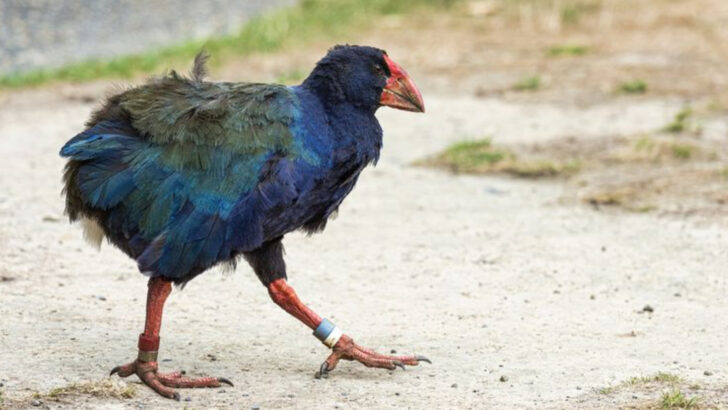Some birds gave up flying—and became total legends.
No wings in the sky? No problem.
These feathered rebels crash the bird rulebook.
They run like Olympic sprinters.
They swim like sleek torpedoes.
They intimidate, strut, charm, and survive—without ever leaving the ground.
The penguin doesn’t soar.
It rockets underwater like a tuxedoed torpedo.
The cassowary? A prehistoric bouncer with a dagger on its foot.
And the kakapo? A chonky, nocturnal flirt that climbs instead of flies—and still steals hearts.
So, no, they won’t glide across the clouds.
But they’ll stomp, dive, sprint, and swerve their way into your memory.
And once you meet them, you’ll never look at flightless birds the same way again.
Grounded? Maybe.
Forgettable? Never.
Emu
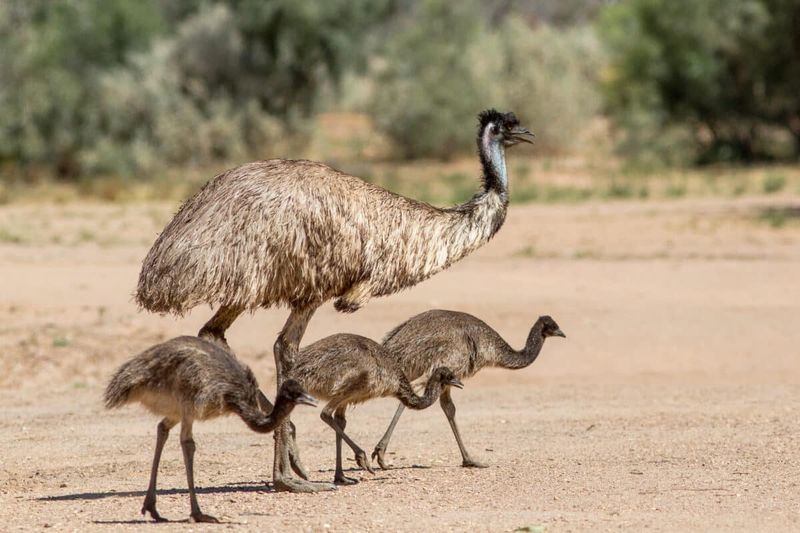
The emu, native to Australia, captivates with its towering stature and striking appearance. Standing nearly as tall as a human, it roams the vast outback with an air of regality. Despite its inability to fly, the emu is a skilled runner, reaching speeds up to 30 miles per hour. Its long, powerful legs enable it to traverse great distances in search of food and water.
Interestingly, the emu plays a crucial role in its ecosystem, dispersing seeds through its droppings. This ecological contribution aids in the growth of new plants, showcasing the emu’s essential role in maintaining biodiversity.
Kiwi
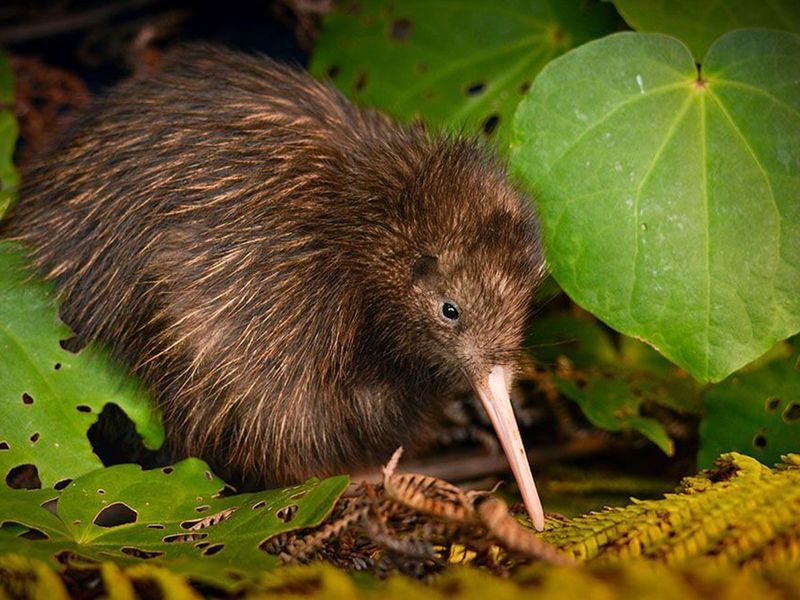
The kiwi, New Zealand’s iconic bird, enchants with its nocturnal habits and unique features. Small and flightless, it thrives in dense forests, foraging for insects and worms with its long, sensitive beak. Its keen sense of smell, unusual for a bird, guides it in its nightly pursuits.
Living in burrows, kiwis are elusive and rarely seen during the day. These solitary creatures lay one of the largest eggs in relation to their body size. This remarkable adaptation ensures the chick’s survival, highlighting the kiwi’s extraordinary traits.
Penguin
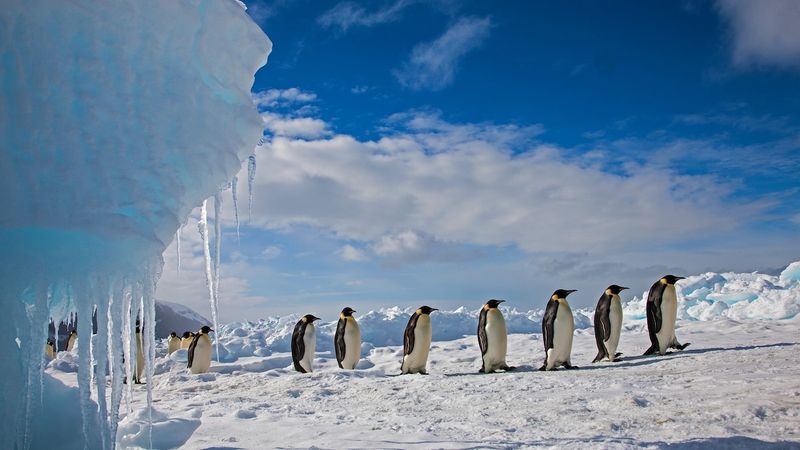
Penguins are synonymous with the icy realms of Antarctica, where their black and white tuxedos stand out against the snow. While they can’t fly, these birds are exceptional swimmers, gliding through the frigid waters with ease.
Their streamlined bodies and strong flippers make them adept hunters, chasing fish and krill beneath the ice. Penguins also showcase remarkable social behavior, often huddling together for warmth. This communal living underscores their survival strategy in one of Earth’s harshest environments.
Cassowary
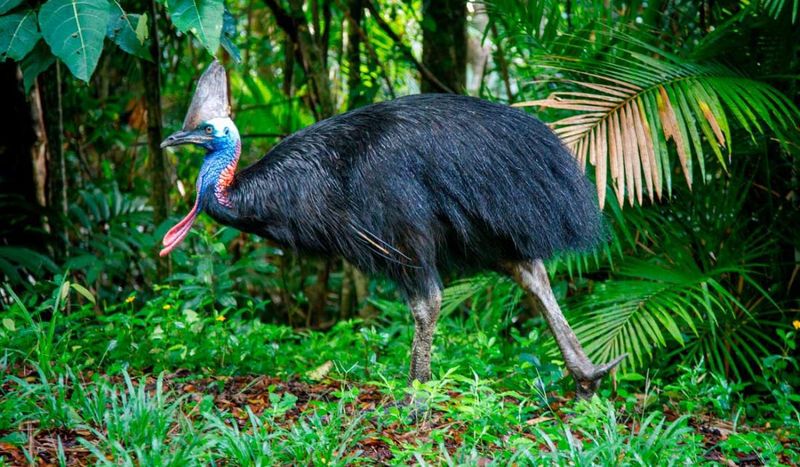
Often dubbed the world’s most dangerous bird, the cassowary is an imposing presence in the rainforests of Australia and New Guinea. Its striking blue and black feathers, combined with a helmet-like casque, make it a sight to behold.
Though flightless, the cassowary is a formidable runner and jumper, capable of defending itself with powerful kicks. This bird is also a key seed disperser, aiding forest regeneration. Its ability to navigate dense jungles with agility is a testament to its evolutionary adaptability.
Ostrich
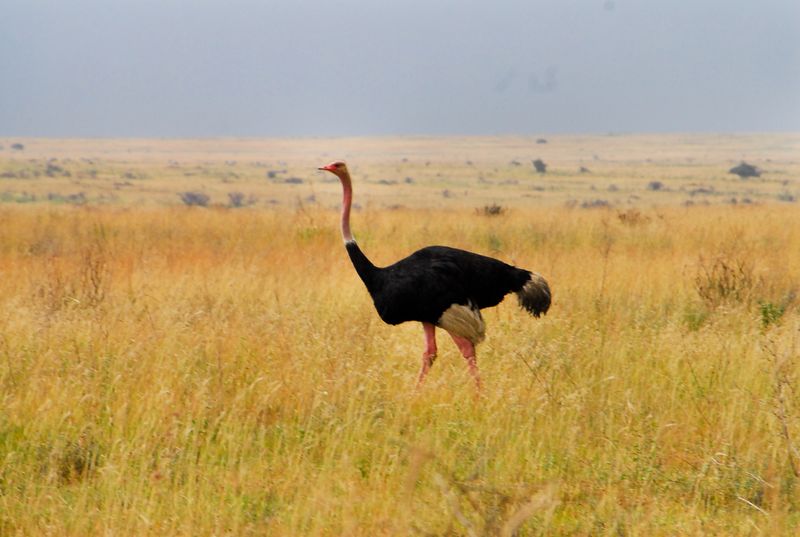
The ostrich, the largest living bird, calls the African savanna its home. Standing at impressive heights, it commands attention with its long neck and sturdy legs. Although flightless, the ostrich is the fastest bird on land, capable of reaching speeds over 40 miles per hour.
Its powerful legs are not just for running; they also serve as formidable weapons against predators. The ostrich’s large eyes provide keen vision, essential for spotting threats. This combination of speed and sight renders it a remarkable survivor in the wild.
Rhea
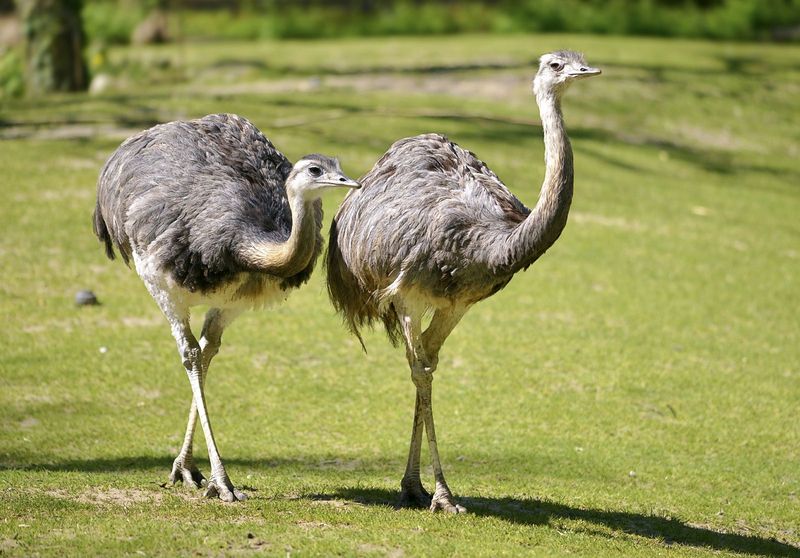
The rhea, often mistaken for its cousin the ostrich, inhabits the vast grasslands of South America. It charms with its fluffy grey feathers and inquisitive demeanor. Though unable to fly, the rhea is a proficient runner, utilizing its legs to swiftly navigate its habitat.
In addition to its speed, the rhea demonstrates intriguing social behavior, often found in flocks. These groups provide safety in numbers and facilitate cooperative breeding. Such social dynamics reflect the rhea’s adaptability and success in its environment.
Kakapo
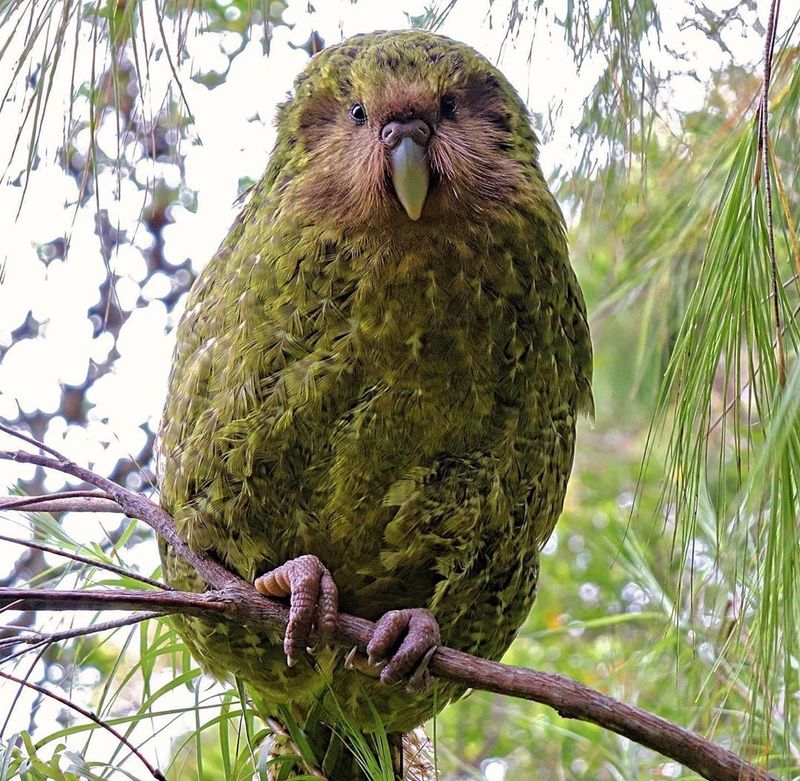
The kakapo, or night parrot, is a unique nocturnal resident of New Zealand. With its bright green plumage and owl-like face, it captivates onlookers. Despite its lack of flight, the kakapo is an excellent climber, scaling trees with ease using its strong claws.
This critically endangered bird is known for its distinct booming call during mating season. Conservation efforts are underway to protect its dwindling population. The kakapo’s resilience and unique characteristics make it a symbol of hope for preservation.
Flightless Cormorant

Found exclusively on the Galápagos Islands, the flightless cormorant is an evolutionary marvel. Its reduced wings are unsuitable for flight, yet it is superbly adapted to life in the water. With strong legs and webbed feet, this bird excels at diving, catching fish with remarkable skill.
The cormorant’s unique traits highlight nature’s adaptability. Its specialized feeding techniques and limited range make it a fascinating subject of study. Understanding its role in the island ecosystem is key to its conservation.
Steamer Duck
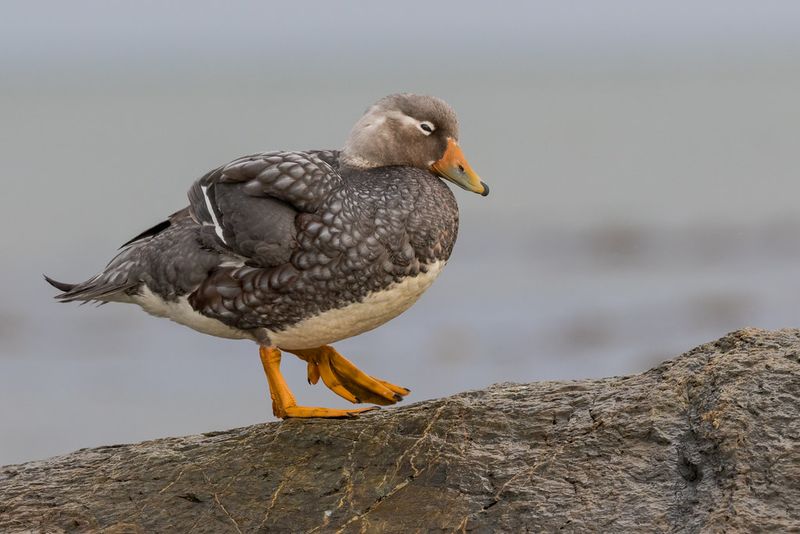
The steamer duck, native to South America, captivates with its strong, paddle-like wings. While these wings can’t lift the duck into the air, they’re perfect for propelling it across water at impressive speeds.
Known for their aggressive nature, steamer ducks fiercely defend their territory. Their robust build makes them formidable opponents. Despite this, they play a crucial role in their aquatic habitats, showcasing the diverse adaptations of flightless birds.
Takahe
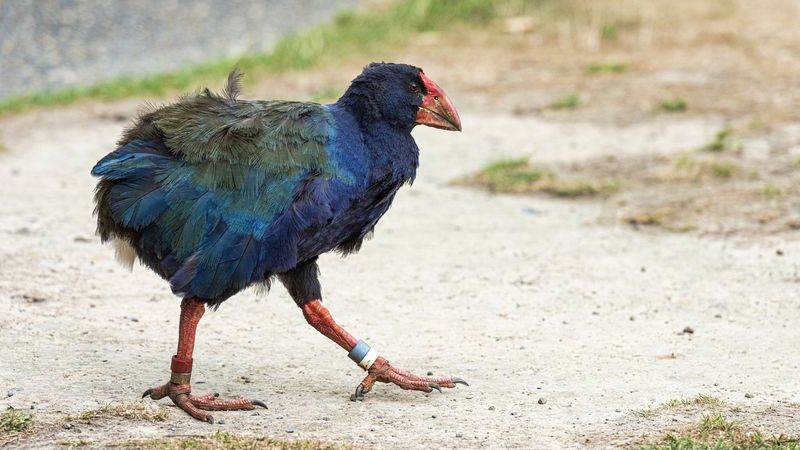
The takahe, once thought extinct, adds a touch of the miraculous to New Zealand’s wildlife. With vivid blue and green feathers, it brings color to the alpine meadows it inhabits. Though flightless, the takahe uses its strong legs to forage for food and navigate its environment.
Conservation efforts have been pivotal in its resurgence. Its survival story is a testament to the dedication of those working to protect it. The takahe’s vibrant presence and history of rediscovery make it a beloved icon of resilience.
Weka
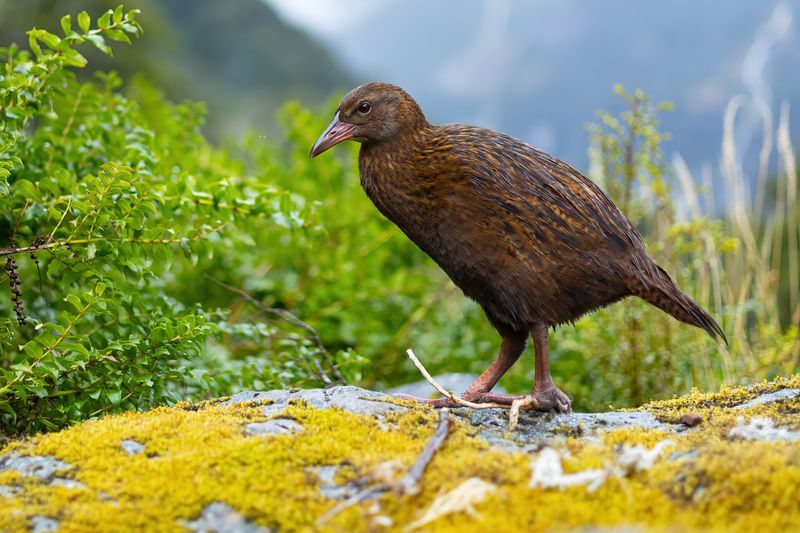
The weka, a curiosity of New Zealand, is known for its bold and inquisitive nature. This flightless bird roams the forest floor, its brown feathers providing excellent camouflage. It’s a natural scavenger, often seen investigating campsites and picnics.
Wekas play an important role in their ecosystem, aiding in seed dispersal. Their adaptability is reflected in their varied diet, which includes insects, fruits, and small animals. The weka’s cheeky behavior and ecological contributions make it a fascinating study.
Kagu
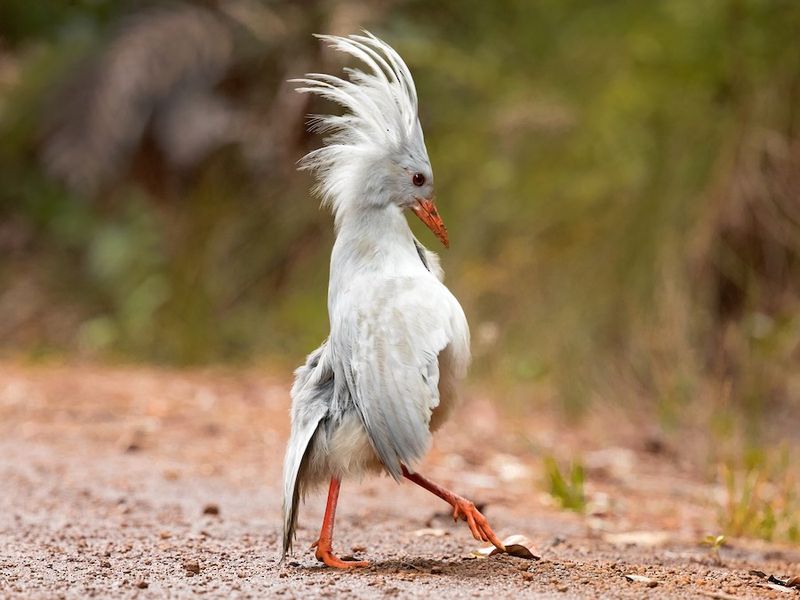
The kagu, an enigmatic resident of New Caledonia, is a bird of mystery. Its ghostly white plumage and striking crest set it apart. Though it cannot fly, the kagu is a nimble runner and jumper, traversing its forest home with ease.
This bird’s haunting call is often heard echoing through the trees. Conservation efforts focus on protecting its fragile habitat. The kagu’s unique appearance and elusive nature make it a symbol of New Caledonia’s natural heritage.
Inaccessible Island Rail
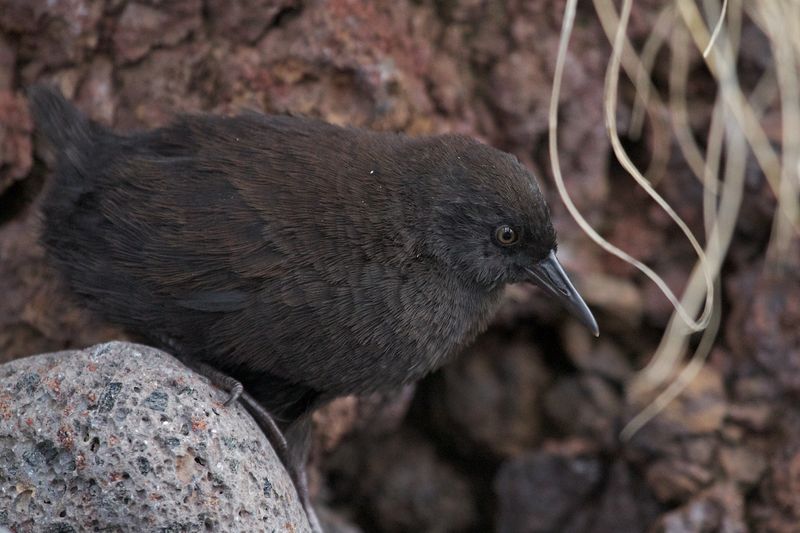
The Inaccessible Island rail, the world’s smallest flightless bird, is a marvel of adaptation. Residing on a remote island in the South Atlantic, it thrives in isolation. Its dark feathers and red eyes make it a distinctive sight among the rocky landscape.
Despite its size, the rail navigates its rugged environment with surprising agility. Its ability to thrive on limited resources showcases the resilience of nature. Protecting this tiny bird is vital for preserving biodiversity on the island.
Titicaca Grebe
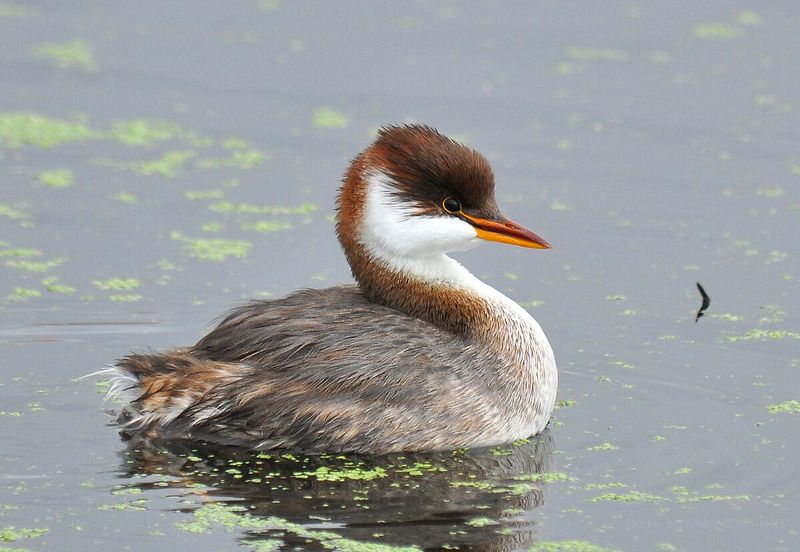
The Titicaca Grebe, indigenous to the high-altitude Lake Titicaca, captivates with its striking plumage and aquatic prowess. Unlike most birds, this grebe is renowned for its exceptional swimming skills, gliding effortlessly through water.
Adapting to life at nearly 3,800 meters above sea level, it boasts a streamlined body ideal for diving, allowing it to hunt fish with precision.
As it navigates its watery realm, the Titicaca Grebe demonstrates that its wings, though flightless, are perfectly suited for propulsion beneath the waves. Intriguingly, its existence is closely tied to the unique ecosystem of the lake.

